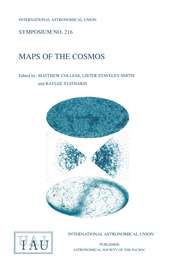No CrossRef data available.
Article contents
Statistics of Wolf-Rayet Binaries
Published online by Cambridge University Press: 03 August 2017
Abstract
Core share and HTML view are not available for this content. However, as you have access to this content, a full PDF is available via the ‘Save PDF’ action button.
A theoretical model of the ensemble of galactic Wolf-Rayet stars is constructed, assuming that all of them are members of either close or wide binaries. The model provides a reasonable explanation of the observed number of WR stars, their distribution over masses, mass ratios of components in binary systems, and spatial velocities. It predicts that up to 10 % of the apparently single WR stars have relativistic companions hidden inside thick stellar winds.
- Type
- Session VII. Evolution
- Information
- Copyright
- Copyright © Kluwer 1991
References
Aslanov, A.A., Kolosov, D.E., Lipunova, N.A., Khruzina, T.S., Cherepashchuk, A.M.
1989, Catalogue of Close Binaries in Late Stages of Stellar Evolution, Moscow Univ. Press.Google Scholar
Conti, P.S., Garmany, C.D., de Loore, C., Vanbeveren, D.
1983, Astrophys. J.
274, 302.CrossRefGoogle Scholar
van der Hucht, K.A., Hidayat, B., Admiranto, A.G., Supelli, K.R., Doom, C.
1988, Astron. Astrophys.
199, 217.Google Scholar
Kraicheva, Z.T., Popova, E.I., Tutukov, A.V., Yungelson, L.R.
1990, Astrophysics
in press.Google Scholar
Tutukov, A.V., Yungelson, L.R.
1979, in Conti, P. S., de Loore, C.W.H. (eds.), Mass Loss and Evolution of O-type Stars,
Proc. IAU Symp. No. 83
(Dordrecht: Reidel), p. 401.Google Scholar


